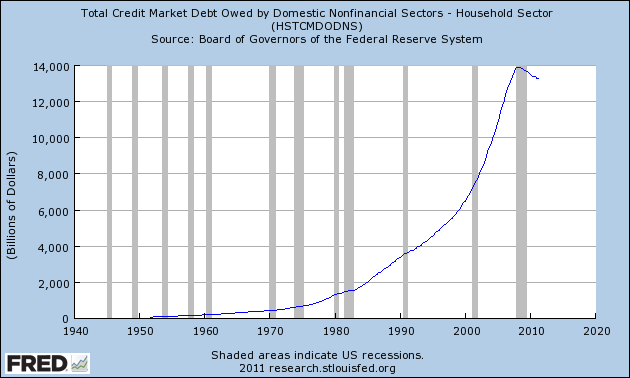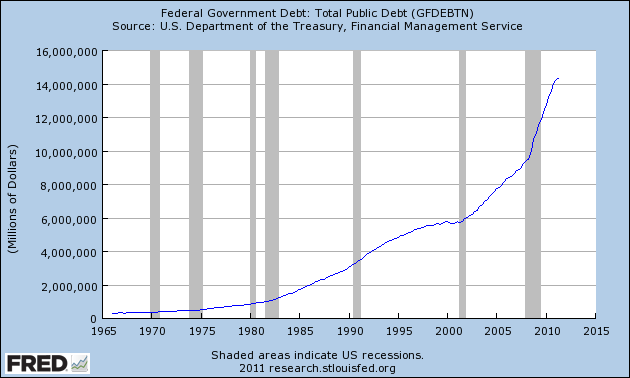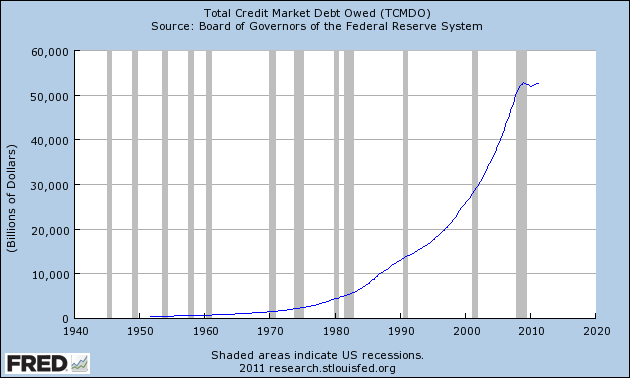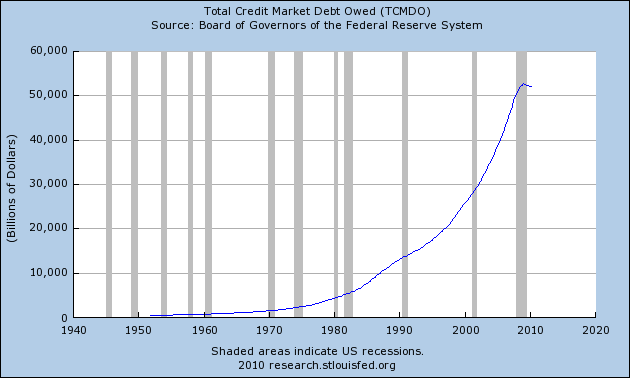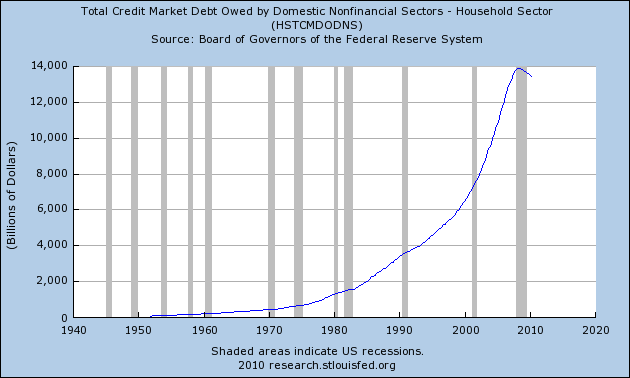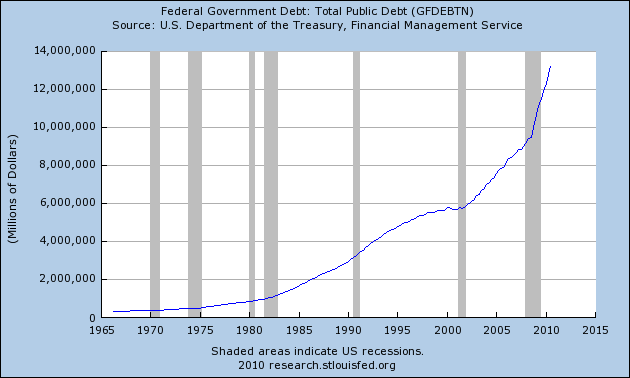 Every single year, millions of young adults head off to colleges and universities all over America full of hopes and dreams. But what most of those fresh-faced youngsters do not realize is that by taking on student loan debt they are signing up for a life of debt slavery. Student loan debt has become a trillion dollar bubble which has shattered the financial lives of tens of millions of young college graduates. When you are just starting out and you are not making a lot of money, having to make payments on tens of thousands of dollars of student loan debt can be absolutely crippling. The total amount of student loan debt in the United States has now surpassed the total amount of credit card debt, and student loan debt is much harder to get rid of. Many young people view college as a “five year party“, but when the party is over millions of those young people basically end up as modern day serfs as they struggle to pay off all of the debt that they have accumulated during their party years. Bankruptcy laws have been changed to make it incredibly difficult to get rid of student loan debt, so once you have it you are basically faced with two choices: either you are going to pay it or you are going to die with it.
Every single year, millions of young adults head off to colleges and universities all over America full of hopes and dreams. But what most of those fresh-faced youngsters do not realize is that by taking on student loan debt they are signing up for a life of debt slavery. Student loan debt has become a trillion dollar bubble which has shattered the financial lives of tens of millions of young college graduates. When you are just starting out and you are not making a lot of money, having to make payments on tens of thousands of dollars of student loan debt can be absolutely crippling. The total amount of student loan debt in the United States has now surpassed the total amount of credit card debt, and student loan debt is much harder to get rid of. Many young people view college as a “five year party“, but when the party is over millions of those young people basically end up as modern day serfs as they struggle to pay off all of the debt that they have accumulated during their party years. Bankruptcy laws have been changed to make it incredibly difficult to get rid of student loan debt, so once you have it you are basically faced with two choices: either you are going to pay it or you are going to die with it.
But we don’t warn kids about this before they go to school. We just endlessly preach to them that they need a college degree in order to get a “good job”, and that after they graduate they will easily be able to pay off their student loans with the “good job” that they will certainly be able to find.
Sadly, tens of millions of young Americans have left college in recent years only to find out that they were lied to all along.
As I have written about previously, college has become a giant money making scam and the victims of the scam are our young people.
Back in 1952, a full year of tuition at Harvard was only $600.
Today, it is over $35,000.
Why does college have to cost so much?
At every turn our young people are being ripped off.
For example, the cost of college textbooks has tripled over the past decade.
Has it suddenly become a lot more expensive to print books?
Of course not.
The truth is that an entire industry saw an opportunity to gouge students and they went for it.
The amount of money being spent on higher education in this country is absolutely outrageous. One father down in Texas says that he will end up spending about 1.5 million dollars on college expenses for his five daughters before it is all said and done.
Unfortunately, most young adults in America don’t have wealthy fathers so they have to take out large student loans to pay for their educations.
Average student loan debt at graduation is estimated to be about $28,720 right now.
That is a crazy figure and it has absolutely soared in recent years. In fact, student loan debt in America has grown by 511 percent since 1999.
And student loan debt will follow you wherever you go.
If you do not pay your loans when you graduate, you could end up having your wages, your tax refunds and even your Social Security benefits garnished.
In addition, your account could be turned over to the debt collectors and they can be absolutely brutal.
The student loan debt bubble is the best thing to happen to debt collectors in ages. The following is what one professional who works in the industry said in a recent article that he wrote for a debt collection industry publication….
As I wandered around the crowd of NYU students at their rally protesting student debt at the end of February, I couldn’t believe the accumulated wealth they represented – for our industry.
It was lip-smacking.
At my right, to graphically display how she was debt-burdened, was a girl wearing a t-shirt emblazoned with the fine sum of $90,000, another with $65,000, a third with $20,000 and over there a really attractive $120,000 was printed on another shirt. Guys were shouldering their share, with t-shirts of $20,000, $15,000, $27,000, $33,000 and $75,000.
There is no way that our young people can afford to take on those kinds of debt loads, and that is one reason why student loan delinquency rates continue to surge.
In fact, the student loan default rate in the United States has nearly doubled since 2005.
Today, one out of every six Americans that owes money on a student loan is in default.
One out of every six.
And it is going to get a whole lot worse.
At this point there are about 5.9 million Americans that are at least 12 months behind on their student loan payments.
So could the bursting of the student loan bubble do tremendous damage to our financial system?
Don’t worry – Federal Reserve Chairman Ben Bernanke is promising that the student loan debt bubble won’t cause a crisis.
And you can trust him, right?
For those living with the burden of unpaid student loan debt, life can be really tough. Some try to avoid the debt collectors, but it is easier said than done. The following is from a recent article in the New York Times….
Hiding from the government is not easy.
“I keep changing my phone number,” said Amanda Cordeiro, 29, from Clermont, Fla., who dropped out of college in 2010 and has fielded as many as seven calls a day from debt collectors trying to recover her $55,000 in overdue loans. “In a year, this is probably my fourth phone number.”
Unlike private lenders, the federal government has extraordinary tools for collection that it has extended to the collection firms. Ms. Cordeiro has already had two tax refunds seized, and other debtors have had their paychecks or Social Security payments garnisheed.
The biggest problem, of course, is that there are not nearly enough jobs for the hordes of college graduates that our system produces each year.
During 2011, 53 percent of all Americans with a bachelor’s degree under the age of 25 were either unemployed or underemployed.
So without a good job, how are those young people supposed to service their student loans?
Once upon a time, a college degree was a guaranteed ticket to the middle class.
Sadly, those days are long gone. Today, millions upon millions of college graduates have taken jobs that do not even require a college education. The following is from a recent CNBC article….
In the last year, they were more likely to be employed as waiters, waitresses, bartenders and food-service helpers than as engineers, physicists, chemists and mathematicians combined (100,000 versus 90,000). There were more working in office-related jobs such as receptionist or payroll clerk than in all computer professional jobs (163,000 versus 100,000). More also were employed as cashiers, retail clerks and customer representatives than engineers (125,000 versus 80,000).
You probably know young people who have experienced the “wake up call” that comes as a result of entering the “real world” in this horrible economic environment.
It is not easy out there.
And this can be extremely disappointing for parents as well. How would you feel if your daughter got very high grades all of the way through college and ended up working as a waitress because she couldn’t find anything else?
Even those that pursue advanced degrees are having an extremely challenging time finding work in this economy.
For example, a Business Insider article from a while back profiled a law school graduate named Erin that is actually on food stamps….
She remains on food stamps so her social life suffers. She can’t afford a car, so she has to rely on the bus to get around Austin, Texas, where she lives. And currently unable to pay back her growing pile of law school debt, Gilmer says she wonders if she will ever be able to pay it back.
“That has been really hard for me,” she says. “I have absolutely no credit anymore. I haven’t been able to pay loans. It’s scary, and it’s a hard thing to think you’re a lawyer but you’re impoverished. People don’t understand that most lawyers actually aren’t making the big money.”
And the really sad thing is that the quality of the education that our young people are receiving is very poor. I spent eight years attending U.S. universities, and most parents would be absolutely shocked at how little our college students are actually learning.
Going to college really has become a ticket to party for four or five or six years with a little bit of “education” thrown in.
But our society has put a very high value on those little pieces of paper called “diplomas” so we all continue to play along with the charade.
Some college students are finding other “creative” ways to pay for their educations other than going into tremendous amounts of debt. For example, an increasing number of young women are seeking out “sugar daddies” who will “sponsor” their educations. The following is from a Huffington Post article about this disturbing trend….
On a Sunday morning in late May, Taylor left her Harlem apartment and boarded a train for Greenwich, Conn. She planned on spending the day with a man she had met online, but not in person.
Taylor, a 22-year-old student at Hunter College, had confided in her roommate about the trip and they agreed to swap text messages during the day to make sure she was safe.
Once in Greenwich, a man who appeared significantly older than his advertised age of 42 greeted Taylor at the train station and then drove her to the largest house she had ever seen. He changed into his swimming trunks, she put on a skimpy bathing suit, and then, by the side of his pool, she rubbed sunscreen into the folds of his sagging back — bracing herself to endure an afternoon of sex with someone she suspected was actually about 30 years her senior.
Of course that young woman will probably deeply regret doing that later on in her life.
Once graduation comes, millions upon millions of our young people are discovering that it is really hard to be financially independent if you are drowning in student loan debt and you can’t find a good job.
So what are they doing?
They are moving back in with Mom and Dad.
One poll discovered that 29 percent of all Americans in the 25 to 34 year old age bracket are still living with their parents.
Ouch.
So what do you think about all of this? Please feel free to post a comment with your thoughts below….


